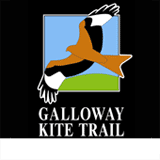| |
5. Tracking Red Kites (Ken Bridge Hotel) 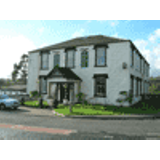 Click for more images Click for more images 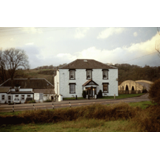 Click for more images Click for more images 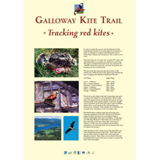 Click for more images Click for more images 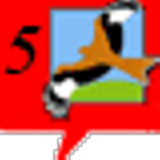 Click for more images Click for more images | | Location | The Ken Bridge HotelNew GallowayNr Castle Douglas | | Postcode | DG7 3PR | | Telephone | 01644 420211 | | Business Link | Please click here | |
Tracking Red Kites
In order to assess the success and development of the reintroduction project in its early stages, it is necessary to make an attempt to recognise individual kites and to follow their fortunes and movements. This is done in two ways.
When the kites are 3-4 weeks old, coloured PVC tags with individual letters or numbers are attached to each wing. The tags do not hinder the bird in any way and provide valuable information about the survival, movements and breeding success of individuals.
The tag on the left wing indicates the location of the release area, whilst the tag on the right wing indicates the year of tagging (and therefore hatching) of the kite.
The birds are also fitted with radio transmitters that give a unique radio signal for each individual. These weigh only a few grams and do not hinder the birds in any way.
Picking up the radio signals requires a clear line of sight and it is useful to radio track from places such as hilltops, which allow a wide sweep of the surrounding area. Under good conditions, radio signals can be detected over 20 miles away, sometimes as far as 60 miles away.
Kite fieldworkers reading wing tags and using radio tracking equipment around the country have detected .Galloway birds moving as far as Northern Ireland, Kintyre, Stirlingshire and even Oxfordshire. Young kites can drift large distances in their first year with many of these returning to the area where they were bred or released. In this way, the movements and breeding performance of individual birds can be assessed and used to influence the project.
Radio tracking is also a good way to find dead kites and detect illegal persecution of the birds. Three kites were found in this manner in March 2003, all having been illegally poisoned. Many kites are now fitted with radio transmitters that last several years in order to monitor the birds more thoroughly.
LEFT WING
| RIGHT WING
| Wales - BLACK
| 2001 – BLUE
| Chilterns - YELLOW
| 2002 – WHITE
| North Scotland - BLUE
| 2003 – RED
| Central England - WHITE
| 2004 – YELLOW
| Central Scotland - RED
| 2005 – ORANGE
| Yorkshire & Cumbria - ORANGE
| 2006 – GREEN
| Galloway - GREEN
| 2007 – PURPLE
| Northeast England - PINK
| 2008 – BLACK
(not tagged in Galloway)
| Aberdeen - PURPLE
| 2009 – PINK | Republic of Ireland - PALE BLUE
| 2010 – BLUE
| Northern Ireland - BROWN
| 2011 – WHITE
|
| | |
| |
 Click for more images
Click for more images 




